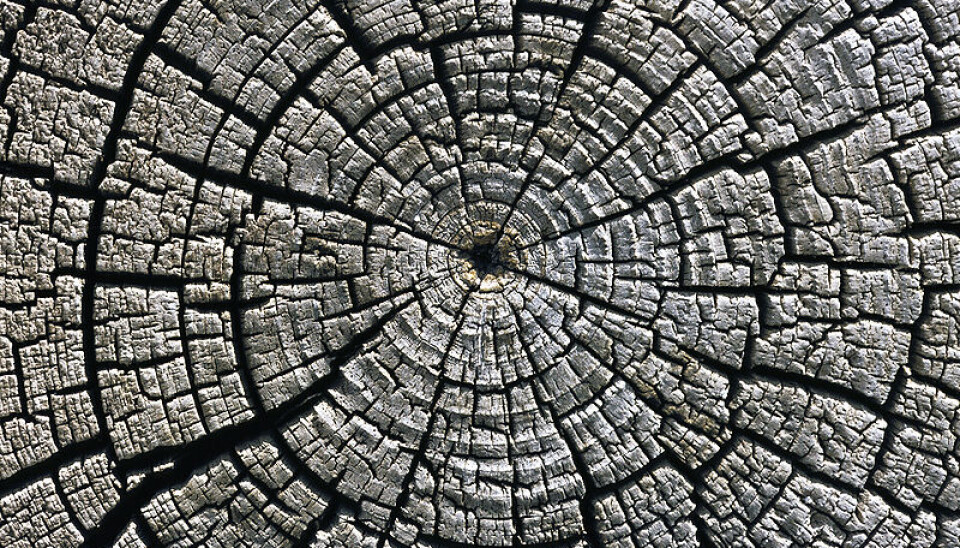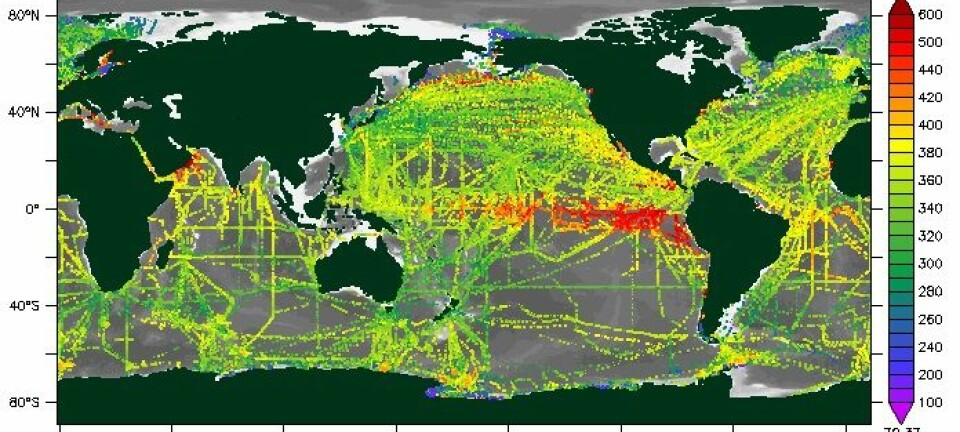
Factoring sheep into climate calculations?
Tree rings in many regions could be more affected by hungry herbivores than by temperatures. This should be taken into account in calculations of historic climate.
Denne artikkelen er over ti år gammel og kan inneholde utdatert informasjon.
Tree rings can be useful when climate researchers try to estimate ancient weather conditions.
Dense, closely spaced annual rings are interpreted as signs of lower temperatures while wider ones indicate the opposite.
But climate is clearly not the only factor with an impact on the increments of tree rings − parasites and plant eaters also play roles. It was formerly unclear how much influence insects and animals could have on tree ring history.
For nine years researchers have studied trees in South Norwegian mountain areas where varying numbers of animals nibble or browse, to see what the density of animals could say about the density of tree rings.
Scientists think their finds can help calibrate tree ring data when calculating former climatic conditions.
Sheep have more of an impact than climate
The study indicates that sheep had more of an impact on tree ring growth than temperatures did in these browsing areas high in the mountains, according to a press release from the British Ecological Society.
“This shows that the density of herbivores affects tree rings, at least in regions where trees grow slowly,” says James Speed. He is a post-doctoral researcher at NTNU Museum of Natural History and Archaeology.
The head of the Bjerknes Centre for Climate Research, Eystein Jansen, is not surprised by the results.
Nevertheless, he doesn’t think this factor is likely to impact studies that have already been made of climate history using tree rings as indicators.
Jansen says that this is because the trees that have been selected in such studies grew in the wilds.
Not much browsing
“I think the trees used in making climate reconstructions were taken from areas in the wilderness where browsing animals had little impact,” he says.
“If you consider the vast Russian taiga and the northern wilderness of North America, there isn’t all that much browsing going on there,” he points out.
The Bjerknes manager adds that climatologists already make allowances for the influence of local tree sites on tree-ring increments.
“When one uses tree rings to reconstruct earlier climates, one has to collect trees from a number of spots to get a representative selection,” he says.
Historical data about animals can be added
Speed says that it wouldn’t be particularly difficult methodologically if researchers wished to include data about the presence of animals in their climate reconstructions.
“The good thing is that we can measure past densities of herbivores through historical archives and fossil remains of fungal spores that have lived on the animal droppings,” he says.
The NTNU researcher stresses that the manner in which tree rings are now used to calculate past climates is not wrong.
“We can still distinguish the aspect of the rings that is determined by temperatures. In addition, at lower altitudes there is less risk of the rings being affected by herbivores because they grow faster, reaching heights that make them inaccessible to the animals,” he explains in the press release.
Translated by: Glenn Ostling

































